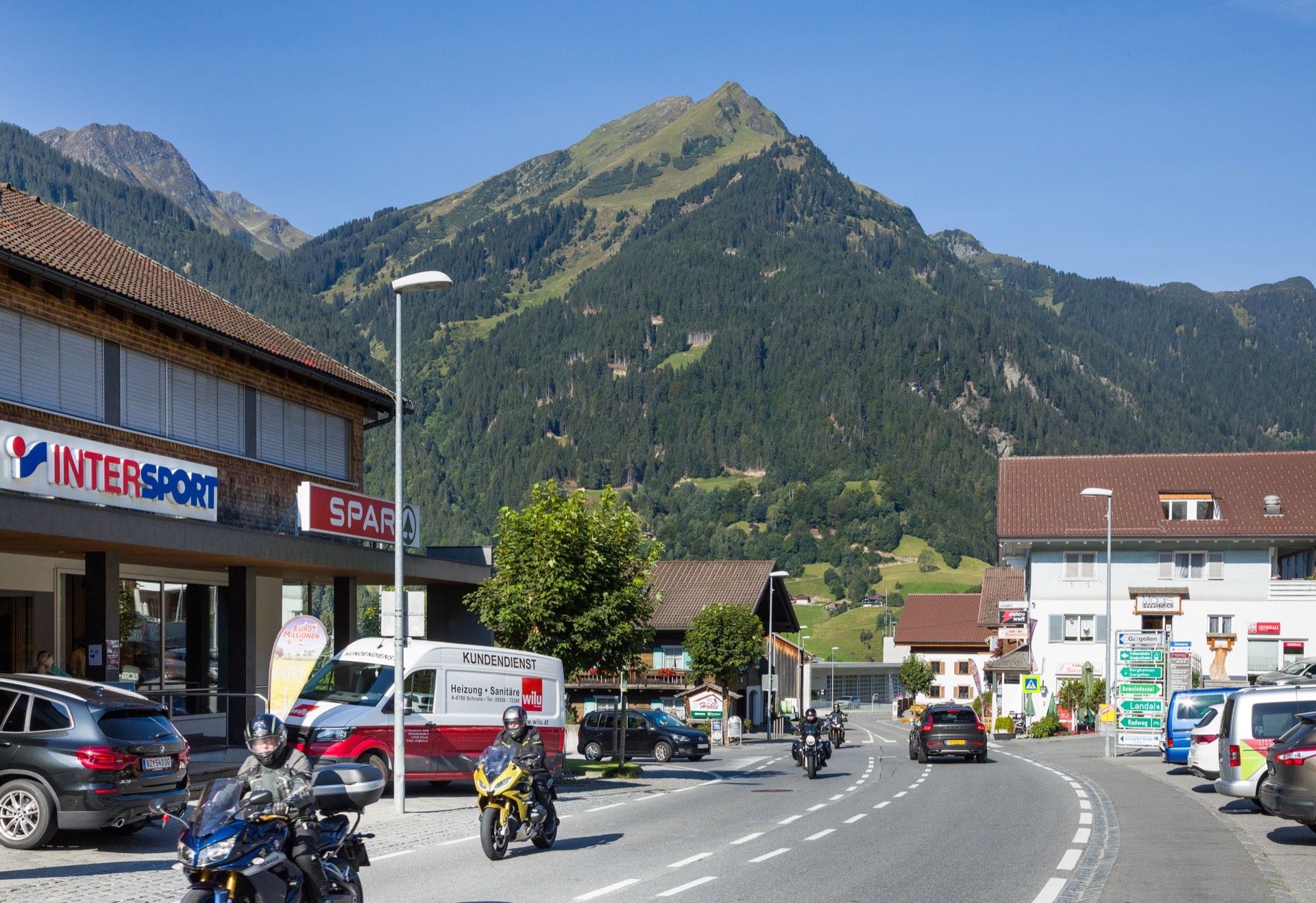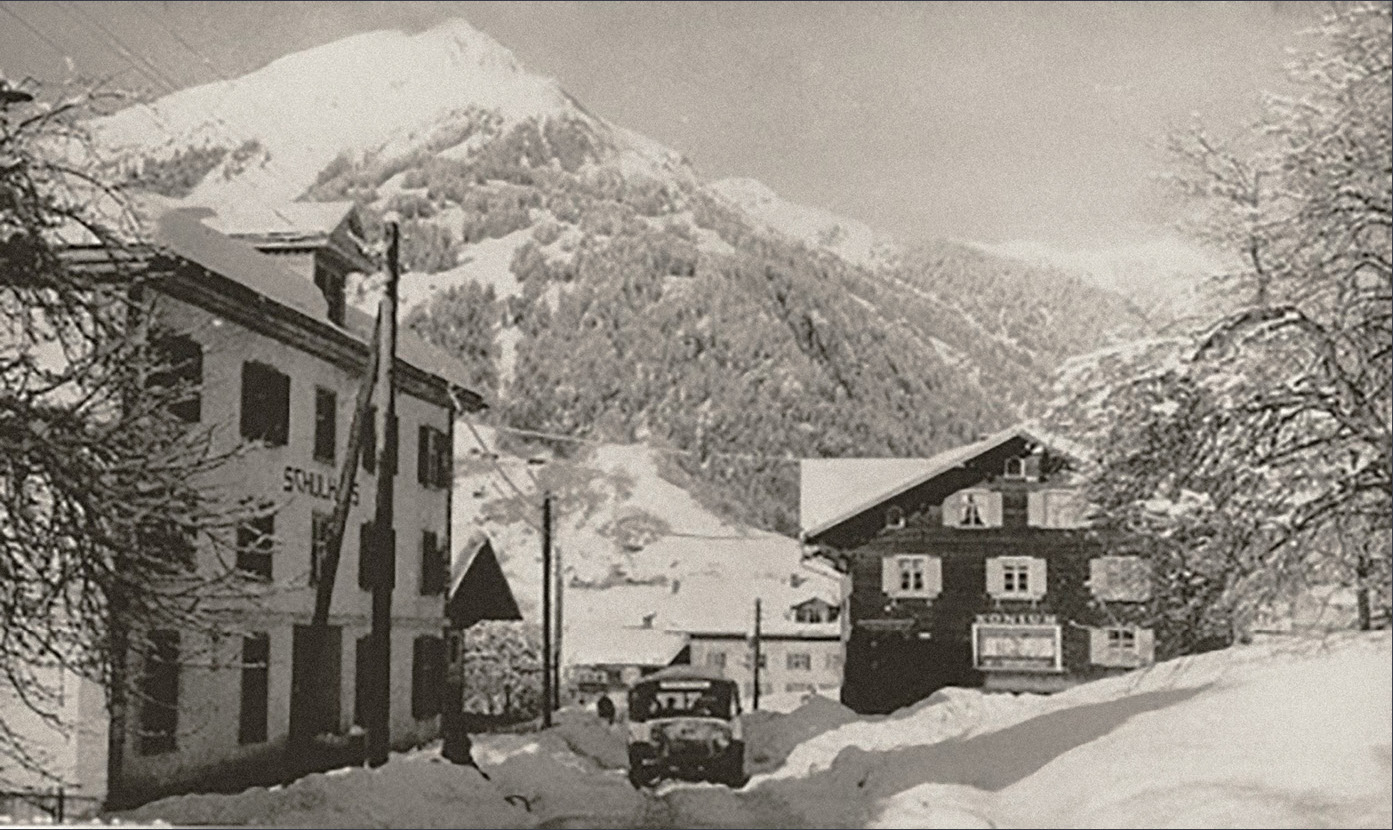Martha and Elisabeth Nehab> September 24, 1942
50 Martha and Elisabeth Nehab
Nothing left to lose: Martha and Elisabeth Nehab from Berlin on the way to the Sarotla Pass
Gargellen, September 24, 1942
Some people in Gargellen and St. Gallenkirch still remember two Jewish women who tried to escape to Switzerland over the Sarotla Pass. Who the two women were remained unknown for a long time. And the accounts of contemporary witnesses contradicted each other. Sometimes they spoke of young women, or of girls, sometimes of old women with snow-white hair. One witness to the imprisonment of the two women tells of how she, having just come down from the alp herself with whey, milk and cheese, was about to put her load onto a tractor that was transporting wood down into the valley.
“And then there was a customs officer marching back and forth all the time, by the bridge with a rifle. (...) And he was always laughing to himself. And I thought to myself: what's wrong with him? And then he looked at these wooden rolls, over there. And then we saw that two old, white-haired women had been tied together there so that they wouldn't run away. And then the woodworkers shouted: ’You mustn't talk to them! They are Jewish women! But we did tell each other a little bit, as we passed by. We have the mother and the brother in these gas chambers...’ And it will probably happen to them as well....
They wanted to cross the border. In Gargellen, they rented a guest room. They stayed there for a few days and scouted out everything. And there they went, Sarotla, up to the alp with a comb and a bucket, as an excuse, to collect berries. (...)
And then he said, the tax collector said to us: ‘I would be a rich man!’ he said. If he had let them through. They would have had jewelry and money with them. And they would have begged and pleaded and cried: ‘Let us cross the border!’ They were just before the border.”[1]
Some eyewitnesses report that the women hired a smuggler who betrayed them. Others report that the two women had too little money or valuables with them to be able to pay an escape agent. In any case, on September 24, 1942, they were locked up in the basement of the old schoolhouse in St. Gallenkirch in order to be deported the next morning. But the two women managed to beat their deportation.
“I was 13 years old at that time. (...) Through my friendship with the son of the gendarme I learned about the incident in the community detention. The friend told me at that time that two Jewish women had hanged themselves in the Kiecha. Since we were both very curious, we decided to go to the place of the incident to see it with our own eyes. (...) The sight that presented itself to us kept me busy and haunted my thoughts for a long time. I saw the two young women who had hanged themselves from the window cross with a thin cord. They were kneeling on the floor facing each other, their heads were tilted to the ground, and the girls were still holding each other's hands. This position was very shocking and unexpected for me at the same time, because I had not expected it. The girls were siblings and also very young, being 16 and 19 years old.”[2]
In fact, the two women were sisters, almost the same age, but no longer girls. Martha Nehab is 50 years old, her sister Elisabeth one year older, when they travel from Berlin to the Montafon valley to escape to Switzerland. Only 80 years after their death the identity of the two desperate fugitives in Gargellen could be revealed.
In 1938, they had tried in vain to obtain a visa and work permit for Great Britain as sports teachers. And finally they stayed with their widowed mother in Berlin.
But in early August 1942, their mother Blanca Nehab took her own life in Berlin to escape deportation. Martha and Elisabeth Nehab had nothing left to lose. On September 15 they check in the Madrisa Hotel in Gargellen. More than a week they spend here, searching for a chance to pass the border to Switzerland.
On September 25, 1942 their bodies are brought to the anatomy at the Innsbruck university, where there names, slightly misspelled, are recorded. [3]
[1] Edith Hessenberger, „Gescheiterte Grenzüberschreitungen. Geschichten die man nicht vergisst.“, in: Andreas Rudigier, Edith Hessenberger, Michael Kasper, Grenzüberschreitungen. Von Schmugglern, Schleppern, Flüchtlingen. Schruns: Montafoner Museen Heimatschutzverein Montafon, 2008, p. 188-189.
[2] Irina Wieser, Endstation „Kiecha“. Das tragische Schicksal zweier jüdischer Frauen im Montafon. Seminararbeit. Bregenz 2003, Appendix, p. 6, quoted after Hessenberger, „Gescheiterte Grenzüberschreitungen“, p. 191
Old schoolhouse in St. Gallenkirch, around 1980.
Collection Karl Netzer, Montafon Archive.

Death notice of mother Blanca Nehab, August 12, 1942
Guestbook Hotel Madrisa, 1942
Entry Martha Nehab and Elisabeth Nehab (under the name Fiebig)

Corpse book 1929-1950 of the Anatomy of the University of Innsbruck, entry 440

Corpse book 1929-1950 of the Anatomy of the University of Innsbruck, entry 441

Stumbling blocks for Martha and Elisabeth Nehab, and their mother Blanca Nehab
Berlin, Trabener Straße 45
50 Martha and Elisabeth Nehab
Nothing left to lose: Martha and Elisabeth Nehab from Berlin on the way to the Sarotla Pass
Gargellen, September 24, 1942
Some people in Gargellen and St. Gallenkirch still remember two Jewish women who tried to escape to Switzerland over the Sarotla Pass. Who the two women were remained unknown for a long time. And the accounts of contemporary witnesses contradicted each other. Sometimes they spoke of young women, or of girls, sometimes of old women with snow-white hair. One witness to the imprisonment of the two women tells of how she, having just come down from the alp herself with whey, milk and cheese, was about to put her load onto a tractor that was transporting wood down into the valley.
“And then there was a customs officer marching back and forth all the time, by the bridge with a rifle. (...) And he was always laughing to himself. And I thought to myself: what's wrong with him? And then he looked at these wooden rolls, over there. And then we saw that two old, white-haired women had been tied together there so that they wouldn't run away. And then the woodworkers shouted: ’You mustn't talk to them! They are Jewish women! But we did tell each other a little bit, as we passed by. We have the mother and the brother in these gas chambers...’ And it will probably happen to them as well....
They wanted to cross the border. In Gargellen, they rented a guest room. They stayed there for a few days and scouted out everything. And there they went, Sarotla, up to the alp with a comb and a bucket, as an excuse, to collect berries. (...)
And then he said, the tax collector said to us: ‘I would be a rich man!’ he said. If he had let them through. They would have had jewelry and money with them. And they would have begged and pleaded and cried: ‘Let us cross the border!’ They were just before the border.”[1]
Some eyewitnesses report that the women hired a smuggler who betrayed them. Others report that the two women had too little money or valuables with them to be able to pay an escape agent. In any case, on September 24, 1942, they were locked up in the basement of the old schoolhouse in St. Gallenkirch in order to be deported the next morning. But the two women managed to beat their deportation.
“I was 13 years old at that time. (...) Through my friendship with the son of the gendarme I learned about the incident in the community detention. The friend told me at that time that two Jewish women had hanged themselves in the Kiecha. Since we were both very curious, we decided to go to the place of the incident to see it with our own eyes. (...) The sight that presented itself to us kept me busy and haunted my thoughts for a long time. I saw the two young women who had hanged themselves from the window cross with a thin cord. They were kneeling on the floor facing each other, their heads were tilted to the ground, and the girls were still holding each other's hands. This position was very shocking and unexpected for me at the same time, because I had not expected it. The girls were siblings and also very young, being 16 and 19 years old.”[2]
In fact, the two women were sisters, almost the same age, but no longer girls. Martha Nehab is 50 years old, her sister Elisabeth one year older, when they travel from Berlin to the Montafon valley to escape to Switzerland. Only 80 years after their death the identity of the two desperate fugitives in Gargellen could be revealed.
In 1938, they had tried in vain to obtain a visa and work permit for Great Britain as sports teachers. And finally they stayed with their widowed mother in Berlin.
But in early August 1942, their mother Blanca Nehab took her own life in Berlin to escape deportation. Martha and Elisabeth Nehab had nothing left to lose. On September 15 they check in the Madrisa Hotel in Gargellen. More than a week they spend here, searching for a chance to pass the border to Switzerland.
On September 25, 1942 their bodies are brought to the anatomy at the Innsbruck university, where there names, slightly misspelled, are recorded. [3]
[1] Edith Hessenberger, „Gescheiterte Grenzüberschreitungen. Geschichten die man nicht vergisst.“, in: Andreas Rudigier, Edith Hessenberger, Michael Kasper, Grenzüberschreitungen. Von Schmugglern, Schleppern, Flüchtlingen. Schruns: Montafoner Museen Heimatschutzverein Montafon, 2008, p. 188-189.
[2] Irina Wieser, Endstation „Kiecha“. Das tragische Schicksal zweier jüdischer Frauen im Montafon. Seminararbeit. Bregenz 2003, Appendix, p. 6, quoted after Hessenberger, „Gescheiterte Grenzüberschreitungen“, p. 191
Old schoolhouse in St. Gallenkirch, around 1980.
Collection Karl Netzer, Montafon Archive.

Death notice of mother Blanca Nehab, August 12, 1942
Guestbook Hotel Madrisa, 1942
Entry Martha Nehab and Elisabeth Nehab (under the name Fiebig)

Corpse book 1929-1950 of the Anatomy of the University of Innsbruck, entry 440

Corpse book 1929-1950 of the Anatomy of the University of Innsbruck, entry 441

Stumbling blocks for Martha and Elisabeth Nehab, and their mother Blanca Nehab
Berlin, Trabener Straße 45








